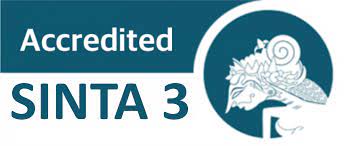IMPROVING LEARNING OUTCOMES IN ISLAMIC HISTORY LESSON BY USING VISUAL, AUDITORY AND KINESTHETIC (VAK) STRATEGIES
Abstract
Keywords
Full Text:
PDFReferences
Budiyanto, M. A. K. (n.d.). Sintaks 45 Metode Pembelajaran dalam Student Centered Learning. UMY Press.
Deporter, B. (2003). Quantum Learning: Membiasakan Belajar Nyaman dan Menyenangkan. Kaifa.
Djajad, M. (2019). Pengantar Penelitian Tindakan Kelas. Arti Bumi Intaran.
Hartanti, K. (2014). Pengaruh Model Pembelajaran VAK (Visualisai, Auditori, Kinestetik) terhadap Belajar Pada Siswa di SDN Tlogo Mulyo Temanggung. PAI, 9(1).
Nasution, W. N. (2017). Strategi Pembelajaran Suatu Pendekatan Bagaimana eningkatkan Kegiatan Belajar Siswa Secara Transformatif. Perdana Mulya Sarana.
Ngalimun. (2013). Strategi Model Pembelajaran. Aswaja.
Parnawi, A. (2020). Psikologi Belajar. Budi Utama.
Satriawati, J. (2021). Model-Model Pembelajaran Inovatif Di Sekolah Dasar. Samudra Biru.
Siti Rokhayati. (2022). Observasi Nilai Kelas 3F.
Suci, G. S. (2020). Transformasi Digital dan Gaya Belajar. CV Pena Persada.
Yulia, P. (2015). Pengaruh Model Pembelajaran Quantum Tipe Visual auditory kinestetik terhadap kemampuan komunikasi Matematis siswa kelas VII SMP NEGRI 17 BATAM. Pytagoras, 4(2).DOI: https://doi.org/10.18860/abj.v9i2.28822
Refbacks
- There are currently no refbacks.
Copyright (c) 2024 salma sholichatun nisa
License URL: https://creativecommons.org/licenses/by-sa/4.0/
...............................................................................................................................................................
Mailing Address:
Ruang Jurnal Abjadia, Fakultas Ilmu Tarbiyah dan Keguruan (FITK)
Universitas Islam Negeri (UIN) Maulana Malik Ibrahim Malang
Jalan Gajayana 50 Malang 65144, Jawa Timur, Indonesia
Phone/Faximile: (+62341) 552398, Phonsel: +6281333666063
Website: http://ejournal.uin-malang.ac.id/index.php/abjadia
Email: abjadia@uin-malang.com
Abjadia: International Journal of Education. This work is licensed under a Creative Commons Attribution-ShareAlike 4.0 International License.
...............................................................................................................................................................
Indexed by:






